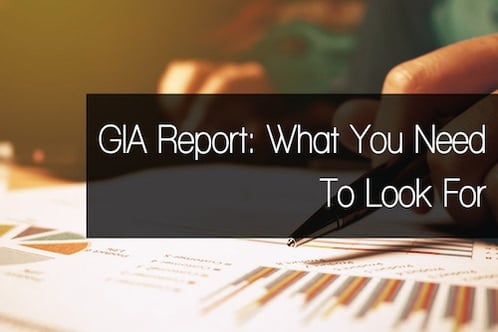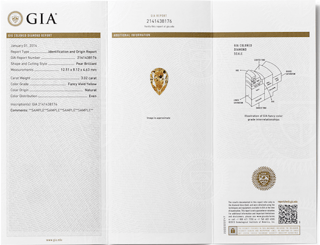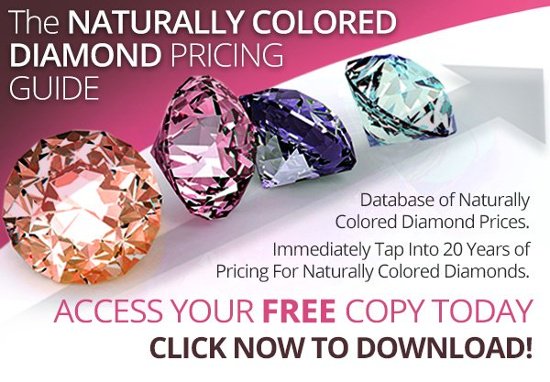This post has been updated for 2021
As diamond enthusiasts, collectors, and investors, it's only natural you want to know that you're getting exactly what you paid for. It's therefore a smart choice to always request for, and verify the authentication of your diamond’s GIA certificate upon purchase.

In this article we will be looking at:
- What is the GIA Colored Diamond Grading Report?
- What is the GIA Colored Diamond Identification and Origin Report?
- What is the Purpose of the Full GIA Report?
- Closing Remarks
There are two different types of colored diamond certifications provided by the GIA. The first, and most commonly known, is the all inclusive, Colored Diamond Grading Report. The second report is known as Colored Diamond Identification and Origin Report. While these reports may differ vastly in terms of detail and audience, they carry the same authority and validity for the holder of the diamond.
In the past, only the authenticity of the full diamond grading report was verified through the official GIA website. In recent years however, the GIA has implemented changes enabling holders of any naturally colored diamond report (issued by the GIA) to be authenticated online.
If you are interested in the progression and implementation of these changes, you can find them here.
What is the GIA Colored Diamond Grading Report?
This fully detailed report provides an in depth quality assessment and is issued for all colored diamonds weighing 0.15 carats or more. The full GIA Colored Diamond Grading Certificate includes the following data:
- The issue date of the report
- The unique report number
- The shape and cut of the stone
- The dimensions and carat weight of the diamond
- The origin of the diamond’s hue (distinction between natural and treated coloring)
- The color grading of the diamond (fancy color grade and hue intensity)
- The dispersion of color within the stone’s body (even or uneven hue distribution)
- The clarity grading of the stone
- The quality of the stone’s polish and surface condition
- The diamond's proportional symmetry including facet, crown and general outline information
- The existence and strength of fluorescence within the stone
- The unique Laser Inscription Registry (upon request)
- The diamond’s plotting diagram approximating the shape and cutting style of stone
- A full color, detailed image of your diamond can also be included (upon your request)

What is the GIA Colored Diamond Identification and Origin Report?
As mentioned above, the GIA also offers a second diamond certification report. This is considered a “half” or “color only report”, and for good reason. Conversely to the first report, the second report focuses only on the origin and grading of the diamond’s color. Despite being spartan, this certificate holds the same authenticity and validity as the “full” report; it just serves a different audience.
From the image below, we can see that the document is limited to providing the stone’s color grading, origin and distribution, along with its carat weight, cutting style, and measurements. As in the full report, a full color, detailed image of the diamond can be included upon your request.

What is the Purpose of the Full GIA Report?
At this point you may be wondering why anyone would settle for the “color only” report when they can get an all inclusive certificate providing all the information one should know about the diamond they are purchasing.
When investing in a high quality, extremely rare, fancy colored diamond it is highly recommended to opt for the full GIA Colored Diamond Grading Report. Not all diamonds however, are multi-million dollar purchases of impeccable clarity and saturation. There are times when diamond enthusiasts will want (or can only afford) to purchase a stone of lesser clarity, not so much as an investment, but as a trinket, a gift, or just for the sake of having. In such cases it is actually wiser to request a “half” certificate as it will still verify the authenticity of the report but at a lesser cost.
Closing Remarks
Regardless of the type of certificate you choose, you will be able to verify your diamond’s authenticity through the GIA website via the Analysis and Grading Report Check option. This feature will allow you to confirm the validity of the information provided on your certificate upon your stone’s purchase. All that will be required from you is the unique GIA certification number on your GIA report, and make sure it coincides with the information stored in their database.
For more reading on colored diamonds, check out the link below.
- Investing in Natural Pink Diamonds: What You Need to Know
- Pink Diamonds Show Largest Growth of Colored Diamonds


